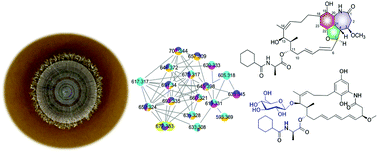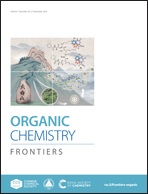Molecular networking-based for the target discovery of potent antiproliferative polycyclic macrolactam ansamycins from Streptomyces cacaoi subsp. asoensis†
Abstract
To find bioactive natural products, the ethyl acetate extract of Streptomyces cacaoi subsp. asoensis H2S5 was analyzed based on molecular networking. The analysis targeted a specific cluster and led to the discovery of two unprecedented rearranged ansamycins incorporating a fused 5/6/7 tricyclic ring system, strecacansamycins A (1) and B (2), and one rare glycosylated trienomycin, strecacansamycin C (3). Their structures were determined by comprehensive NMR analysis, ECD calculations, chemical reactions, and enzyme stereospecificity analysis. The genome of the produced strain was sequenced and the related gene cluster (tym) was identified. With the availability of the genome sequence data, the known stereospecificities of biosynthetic enzymes provided more evidence for the absolute stereochemistry identification. Anti-proliferative assays revealed that strecacansamycin A (1) exhibited significant activity with the IC50 values of 2.21, 0.61, and 7.01 μM against PC-3, HepG2, and U87-MG cells, respectively.



 Please wait while we load your content...
Please wait while we load your content...